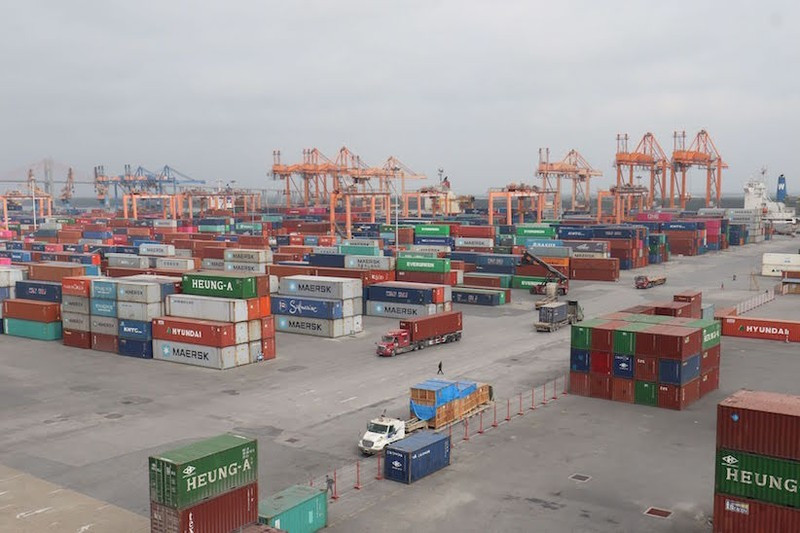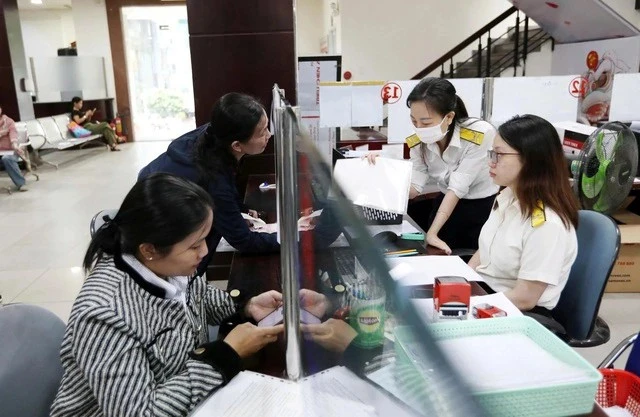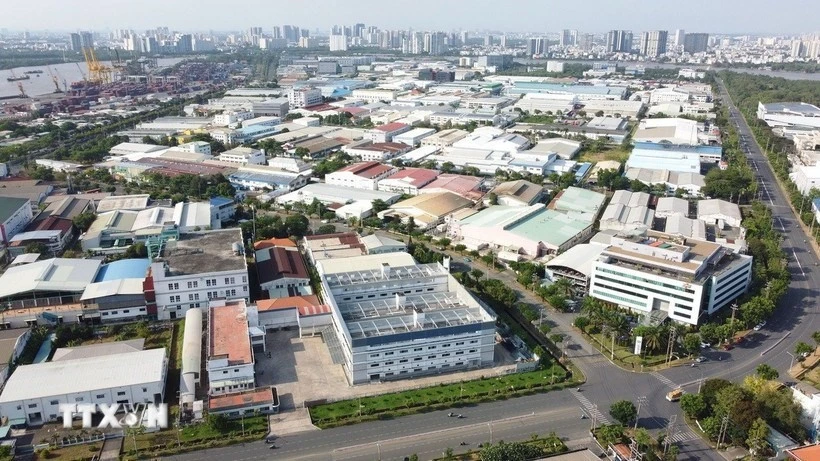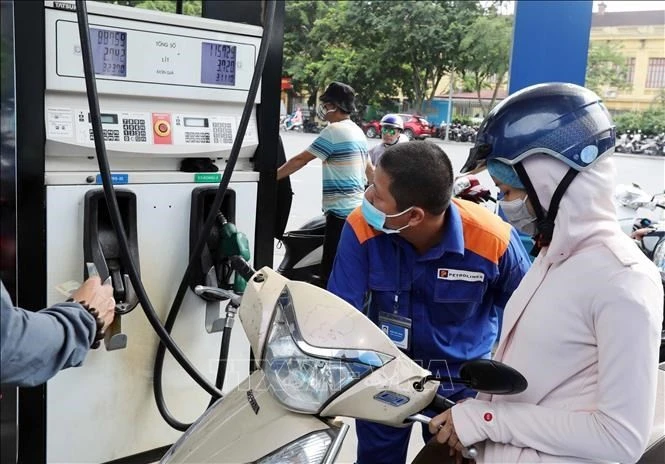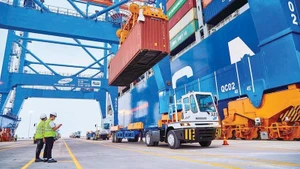Although imports also increased significantly, exports helped maintain a large trade surplus of 24.77 billion USD. This marks the ninth consecutive year in which Vietnam has recorded a trade surplus.
Notable achievements
Vietnam’s exports have made substantial progress and achieved new records. In 2012, export turnover exceeded 100 billion USD, in 2017 it surpassed 200 billion USD, and in 2021 it crossed the 300 billion USD mark. In 2024, the total import-export turnover reached a record 786.29 billion USD, with exports exceeding 400 billion USD for the first time. This is a significant achievement in Vietnam’s international trade development efforts. This result has also elevated the country to the 17th position among the world’s 20 largest trading economies.
Tran Thanh Hai, Deputy Director of the Import-Export Department under the Ministry of Industry and Trade (MOIT), said: “These achievements demonstrate that export-import policies have been highly effective, along with Vietnamese enterprises’ efforts in production and utilising opportunities from free trade agreements (FTAs).”
2024 also recorded excellent results in agricultural exports. Vietnamese rice has surpassed major competitors like Thailand and India to secure large export contracts in Asian and African markets. Vietnamese fruits such as jackfruit, dragon fruit, and mangoes have witnessed increased exports to demanding markets.
Agricultural products now account for a considerable proportion of export turnover in major markets such as China, the US, the EU, and Japan. “Vietnam’s agricultural export turnover to the US reached over 10 billion USD, accounting for 10% of the total trade surplus in this market,” said Pham Quang Huy, Vietnam’s trade counsellor in the US.
In-depth analysis of export results also shows that domestic economic sector production recovered very positively in 2024, with export turnover up by 19.8%, 5.5 percentage points higher than the country’s overall export growth and 7.5 percentage points higher than the foreign-invested sector. Additionally, electronic goods continue to lead export value with turnover reaching 72.6 billion USD, up 26.6% compared to 2023, accounting for 17.9% of total export turnover, demonstrating Vietnam’s effective transition from raw product manufacturing to high value-added products, particularly in processing, manufacturing, and high-tech industries.
According to experts, Vietnam’s international trade agreements have significantly contributed to its impressive export performance. Trade pacts such as the Regional Comprehensive Economic Partnership (RCEP), the EU-Vietnam Free Trade Agreement (EVFTA), and the Comprehensive and Progressive Agreement for Trans-Pacific Partnership (CPTPP) have helped Vietnam expand its markets and reduce tariff barriers, not only boosting exports but also creating opportunities to increase imports of modern technology and production equipment from partner countries.
Luong Hoang Thai, Director of the MOIT’s Multilateral Trade Policy Department, reported that in 2024, in addition to strengthening established markets, the ministry focused on finding new directions. Vietnam successfully penetrated the Middle Eastern market by implementing the FTA with Israel and signing an FTA with the UAE (CEPA). Through signing or completing international trade agreements in 2024, Vietnam has expanded its access to global markets, helping export growth and creating investment opportunities in domestic industries. FTA markets now account for 60% of Vietnam’s total export turnover.
Towards sustainable growth
While acknowledging the rapid export recovery in 2024, MOIT Deputy Minister Phan Thi Thang candidly pointed out several unsustainable factors. Notably, the majority of export turnover comes from foreign-invested enterprises (over 70%), but these heavily depend on global supply chains and have not created spillover effects to encourage the participation of domestic enterprises in global value chains. The entire trade balance surplus also comes from foreign-invested enterprises, while domestic enterprises consistently show an increasing trade deficit.
Additionally, exports remain dependent on several major markets, primarily Northeast Asian countries, the US, ASEAN, and the EU, with export turnover to these four markets accounting for nearly 80% of Vietnam’s total export value. Meanwhile, key exports to major markets like the EU and the US frequently face pressure from trade defence investigations, origin fraud, and technical barriers related to environment, sustainable development, and green transition.
Moreover, export value addition remains below expectations, with most exports concentrated in processing industries (such as textiles, footwear and electronics). The localisation rate remains low with high dependence on imported raw materials. Key agricultural exports are largely in raw or preliminarily processed forms, with limited ability to meet global market quality requirements.
The General Statistics Office’s report also highlighted a decline in exports to China — Vietnam’s largest trading partner — which has negatively impacted overall export revenue. In 2024, exports to this market only reached 60.6 billion USD, down 1.1% compared to 2023. Furthermore, exports remain heavily dependent on key items such as mobile phones, textiles, footwear, and agricultural products, with the limited product diversification bringing potential for increased risks when price fluctuations occur or demand decreases in major markets.
Given current results and many favourable factors, Tran Thanh Hai expects export growth in 2025 to continue achieving double-digit growth. Accordingly, global market recovery will be fundamental in contributing to Vietnam’s export growth. Domestically, enterprises are maintaining good investment and production capacity. However, with many unstable market factors, businesses need to continue strengthening their capabilities to overcome difficulties. Only then can Vietnam maintain sustainable export growth.
Dinh Thi Thuy Phuong, Director of Trade and Service Statistics at the General Statistics Office, also emphasised that businesses need to continue improving the quality of export goods and reducing production costs to enhance Vietnamese goods’ competitiveness in the global market.
Regarding state management, Phuong suggested diversifying ways to promote the benefits of free trade pacts to businesses to help improve efficiency and sustainability of Vietnamese exports to such markets; and continuing to innovate trade promotion activities, focusing on maximising digital transformation in trade promotion activities and connecting domestic and international supply and demand.
Mai Thu Hien, Deputy Director of the MOIT’s Planning and Finance Department, said that in 2025 the ministry will focus on effectively utilising existing FTAs while implementing new agreements to expand and diversify markets, deploying solutions to strengthen exploitation of neighbouring markets, and strongly promoting exports through official channels.
The MOIT will also actively advise on international economic integration policies, especially proposing suitable solutions to encourage and bind FDI enterprises to substantively share and support domestic enterprises in technology transfer, development of management skills, and formation of material supply chains.
